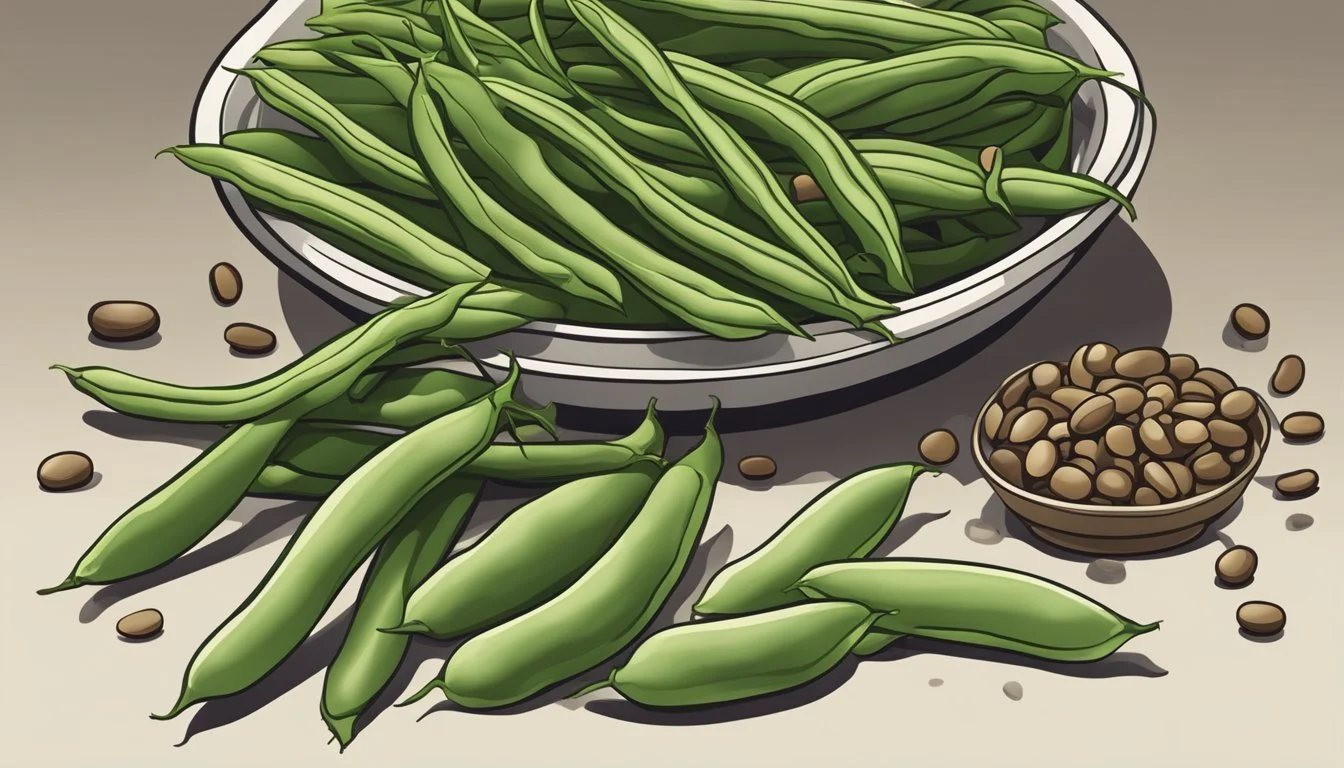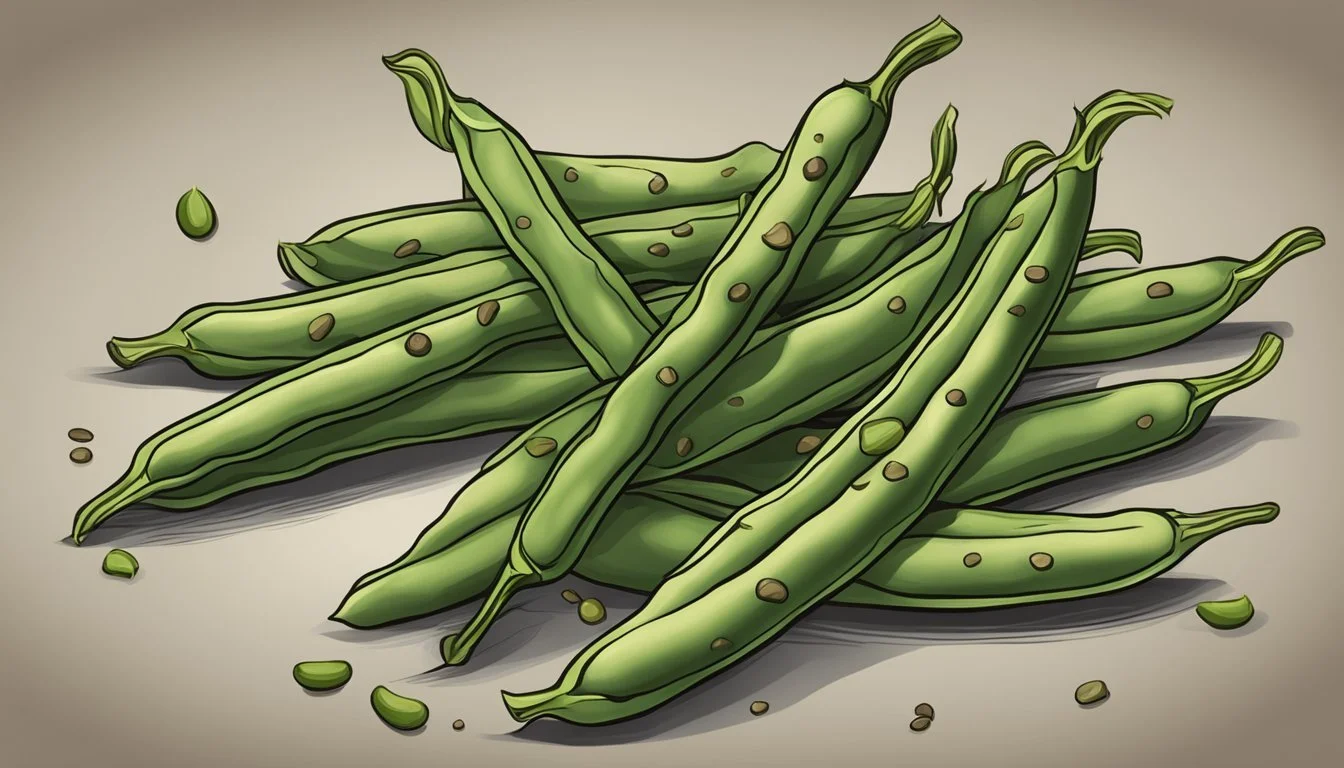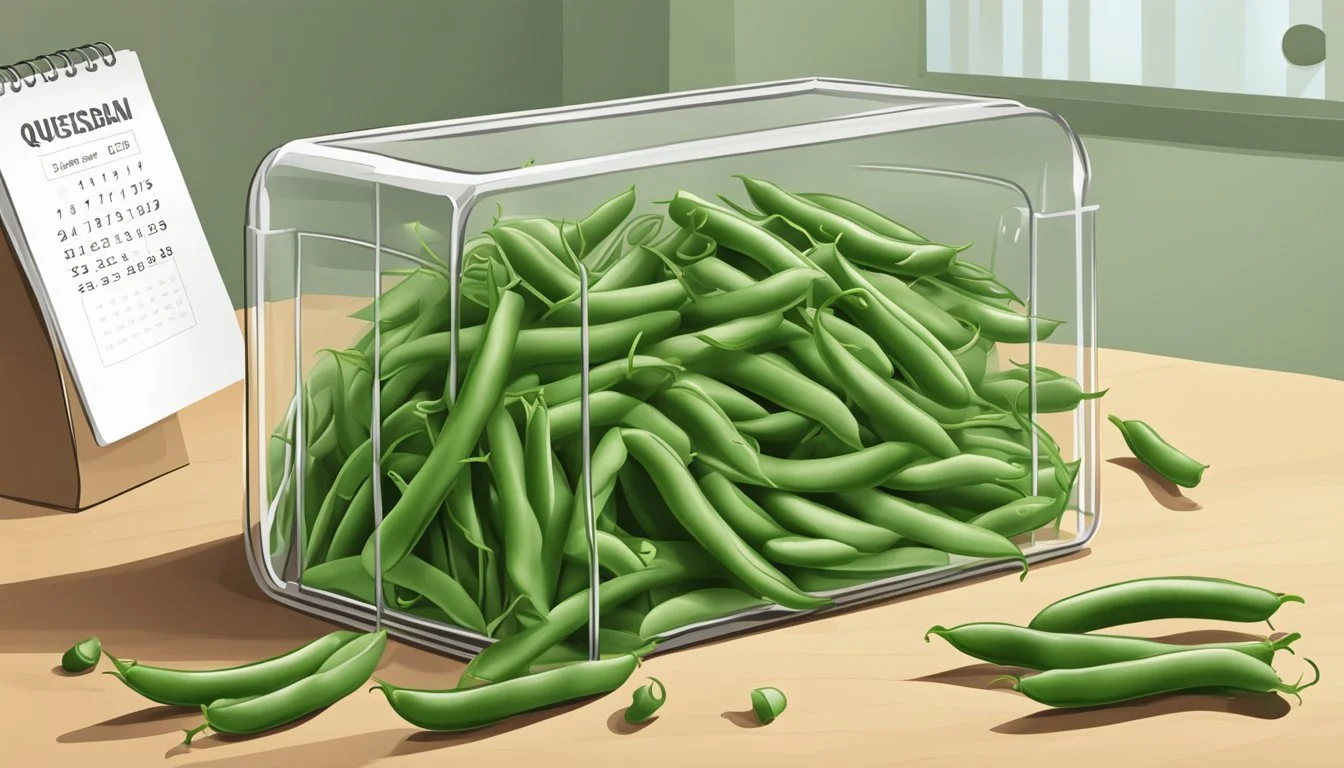Do Green Beans Spoil?
Understanding Freshness and Storage
Green beans are a staple in many kitchens, known for their vibrant color, crunchy texture, and nutritional benefits. Yes, green beans do spoil, and knowing how to identify the signs of spoilage is crucial to avoid health risks. Fresh green beans should be bright green and snap easily, while spoiled beans may turn limp, shriveled, or discolored.
Storing green beans properly can extend their shelf life. Unwashed and raw green beans fare best in a sealed plastic bag within the vegetable drawer of your refrigerator. Typically, fresh beans last about 5-7 days when refrigerated. Be aware that cooked green beans last up to five days in an airtight container, but green beans left out at room temperature for too long should be discarded.
Recognizing spoilage not only helps maintain the taste and quality of green beans but also prevents the loss of their nutritional value. Fresh green beans are rich in vitamins and minerals such as vitamins A, C, and K. Spoiled green beans lose these nutrients and pose health risks if consumed.
What Are Green Beans?
Green beans, also known as string beans or snap beans, are popular vegetables enjoyed worldwide. These veggies are typically green in color but can also come in other varieties, such as wax beans which are yellow.
Fresh green beans are harvested while they are still tender and have a crisp texture.
Green beans are part of the legume family and are commonly found in the produce section of grocery stores. They are highly regarded for their nutritional value, providing essential vitamins and minerals.
Although most commonly green, they can also be found in purple and yellow varieties. Wax beans differ primarily in their color and sometimes in texture and taste.
Green beans can be prepared in various ways, including steaming, boiling, sautéing, and roasting. They are versatile and can be included in numerous dishes, from salads to soups.
They are best consumed when fresh but can also be canned or frozen for longer shelf life. Fresh green beans are characterized by their bright color and firm texture. They should snap easily when bent.
Including fresh green beans in your diet provides a good source of fiber, vitamins A, C, and K, as well as folic acid. Their crisp texture and refreshing taste make them a favorite in many households.
Signs of Spoilage in Green Beans
Green beans can spoil quickly if not stored properly. Identifying spoiled beans involves examining visual indicators, texture changes, and odor. Knowing these signs helps avoid consuming bad green beans.
Visual Indicators
Discoloration is one of the first signs of spoilage. Fresh green beans should be a vibrant green. Any appearance of brown spots or a dull color indicates they are going bad.
Mold is another clear visual sign. Check for any fuzzy or powdery substances on the green beans. Presence of mold means the beans should be discarded.
Look for dark spots as well. Their appearance shows the beans are beginning to spoil.
Texture Changes
Texture is a reliable indicator of freshness. Spoiled green beans often become slimy or mushy. A fresh green bean should be firm and crisp, able to snap easily when bent.
If the texture of the beans is soft or wrinkled, it likely means they are no longer good to eat. Slimy texture is a definite sign the beans have gone bad and should not be consumed.
Odor Evaluation
Odor is another important sign. Fresh green beans typically have a neutral or fresh scent. If the beans emit a sour or foul odor, they are spoiled.
A strong, unpleasant smell indicates the presence of bacterial growth and spoilage. Always rely on your nose to detect any unusual or off-putting odors.
Proper Storage of Green Beans
Storing green beans correctly is essential to maintain their freshness and extend their shelf life. Whether using refrigeration or freezing, following specific guidelines can help keep green beans at their best.
Refrigeration Guidelines
Green beans should be stored in the refrigerator to keep them fresh for as long as possible. They typically stay fresh for up to one week when properly stored. Place untrimmed green beans in a perforated plastic bag to prevent moisture buildup, which can lead to spoilage.
Alternatively, lay the beans flat in a plastic bag, pushing out as much air as possible before sealing. For added freshness, consider storing the bag in the vegetable crisper drawer. If green beans look brown or feel slimy, they have likely gone bad and should be discarded.
Freezing Green Beans
Freezing is an excellent way to extend the shelf life of green beans. Start by blanching the green beans in boiling water for three minutes, then immediately plunge them into ice water. This process stops the cooking and preserves the beans' color and texture.
Once blanched, drain and dry the beans thoroughly to prevent ice crystals during freezing. Transfer the beans to airtight freezer-safe bags or containers, removing as much air as possible. Label each container with the date for easy monitoring. Properly frozen green beans can last up to eight months in the freezer. This method ensures that the beans retain their nutrients and flavor for future use.
Handling and Preparing Green Beans
Proper handling and preparation of green beans are essential to maintain their freshness and enhance their flavor. This involves careful washing and trimming, followed by choosing the right cooking techniques.
Washing and Trimming
Washing green beans thoroughly is crucial. Fresh beans often have dirt or pesticides on them. It's best to rinse them under cold, running water. For an extra step, a vegetable brush can help remove any remaining residue.
Trimming involves removing both ends. Use a sharp knife or kitchen shears to snip off the stem end and the tip. Some prefer to snap them by hand. For dishes like a salad or casserole, cutting the beans into uniform pieces ensures even cooking and better presentation.
Cooking Techniques
Boiling is a common method. Bring a pot of water to a boil and add the green beans. Boil for 3-5 minutes, then transfer them to ice water to stop cooking. This process, known as blanching, helps maintain a vibrant color.
Sautéing involves heating a bit of olive oil in a pan over medium heat. Add the trimmed green beans and cook until tender, about 5-7 minutes. This method preserves the beans' crisp texture and adds a rich flavor.
Roasting requires preheating the oven to 450°F. Toss green beans with olive oil, salt, and pepper, then spread them on a baking dish. Roast for 15-20 minutes, stirring halfway through, until they are lightly browned and tender.
Each technique brings out different aspects of flavor and texture, suited to various dishes such as salads, soups, casseroles, or simply as a side.
Maximizing Shelf Life
Proper storage techniques can help keep green beans fresh for as long as possible.
Fresh Green Beans: Store unwashed and raw green beans in a sealed plastic bag, such as a Ziplock freezer bag. Place the bag in the vegetable drawer of the refrigerator. This method helps the beans stay crunchy and vibrant for 5 to 7 days.
Avoid Washing Prematurely: Do not wash green beans until you are ready to use them. Moisture can accelerate mold growth and spoilage.
Monitor Dryness: Ensure beans are dry before storage. Excess moisture can lead to quicker spoilage. Using a paper towel to absorb any residual moisture can be helpful.
Frozen Green Beans: Flash freeze green beans immediately after harvest or purchase. Place them in airtight containers or sealed plastic bags, labeling them with the date. Stored in the freezer, green beans can last up to a year.
Storage Method Lasts For Fresh (fridge) 5 to 7 days Frozen Up to 1 year Canned 2 to 5 years
Check Expiration: If using canned green beans, always check the expiration date. Canned beans are preserved and can last 2 to 5 years if stored in a cool, dry place, away from direct sunlight.
Maintain Temperature and Humidity: Store beans at a consistently cool temperature. Excessive warmth or fluctuating temperatures can reduce their shelf life.
Implementing these storage tips can maximize the freshness and longevity of green beans, whether fresh, frozen, or canned.
Health and Safety Information
Consuming fresh green beans is generally considered safe and beneficial. They are rich in vitamins, fiber, and antioxidants which contribute to overall health. However, it's important to identify and avoid spoiled green beans to prevent foodborne illnesses.
Food Safety Tips:
Smell: If green beans emit a foul or sour odor, they are likely spoiled and unsafe to eat.
Appearance: Discoloration, such as brown or dark spots, suggests spoilage.
Texture: Fresh green beans should be firm and snap easily. A slimy or mushy texture indicates they should be discarded.
If spoiled green beans are consumed, it can lead to food poisoning. Symptoms may include nausea, vomiting, diarrhea, and abdominal pain.
Checklist for Safe Consumption:
Check appearance - Avoid beans with discoloration or mold.
Smell test - Reject those with a sour or unpleasant odor.
Feel the texture - Firm and crisp beans are ideal, while slimy ones are a hazard.
By following these guidelines, one can enjoy the benefits of green beans while minimizing any risks associated with foodborne illnesses.
Other Forms of Green Beans
Green beans can also be found in various preserved forms which extend their shelf life and provide convenience. These forms include canned green beans and other preservation methods such as freezing and drying.
Canned Green Beans
Canned green beans are a popular option due to their long shelf life and convenience. They are typically pressure canned, which helps to retain nutrients and flavor. Canned green beans can last up to three years if stored properly. They often come pre-cooked and can be used directly in dishes without further preparation.
Despite the convenience, it's essential to inspect canned green beans for signs of spoilage. This includes checking for bulging cans, rust, or dents, as these can indicate contamination. Once opened, these beans should be stored in a sealed container in the fridge and used within a few days to avoid spoilage.
Preservation Methods
Freezing is a common method to preserve green beans, maintaining their nutrients and flavor when done correctly. Frozen green beans can last up to 12 months if stored properly. However, they must be protected from freezer burn, which can affect taste and texture. It is advisable to use airtight containers or heavy-duty freezer bags for storage.
Drying green beans is another method of preservation, though less common. This process involves dehydrating the beans, making them ideal for long-term storage. Rehydration before use is necessary, but they can be a sustainable option for reducing waste and using seasonal produce throughout the year. Proper storage in cool, dry places is essential to prevent spoilage.
When to Discard Green Beans
Signs of spoilage in green beans are noticeable in their appearance, smell, and texture. Green beans should be checked regularly to ensure they remain fresh.
Discoloration is a major indicator. Green beans that have brown spots, dark areas, or any unusual colors should be discarded.
Texture is another important factor. If green beans feel slimy or mushy to the touch, it's best to throw them out.
The smell test can also be useful. Fresh green beans have a crisp, earthy scent. A sour or off odor suggests spoilage and the beans should be discarded.
Check the storage conditions too. Green beans exposed to moisture and warm temperatures spoil quickly. Store them in a cool, dry place to extend their shelf life.
Using these checks regularly can help maintain the quality of the green beans and ensure they are safe to eat.









